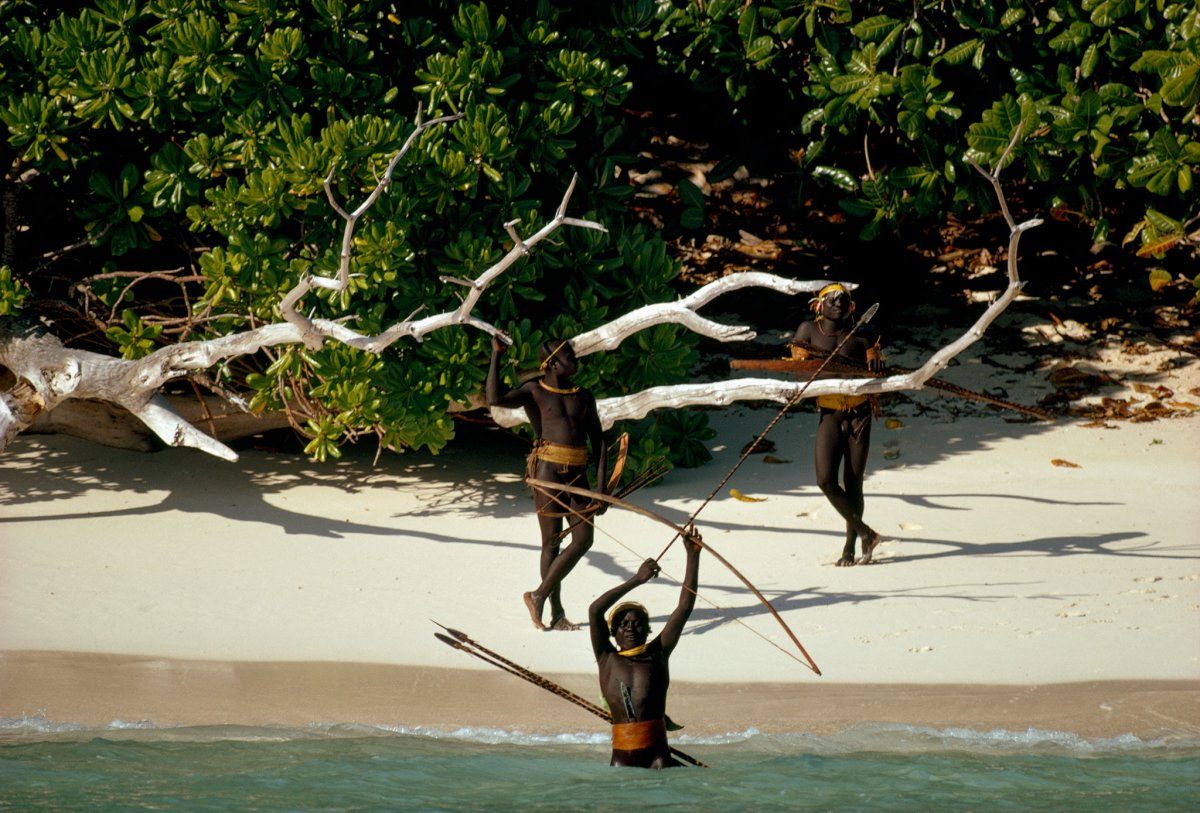
Indian authorities say John Chau died in a bow and arrow attack but have no plans to lay charges over his murder.Īn operation to retrieve his body has been ruled out because of the catastrophic effect it would have on the tribe, who have no immunity to disease and could be wiped out by a virus such as the common cold. Last week a US missionary was killed by Sentinelese tribespeople after several uninvited trips to the island as part of a mission to convert the clan to Christianity. It is believed the tools were forged from metal scavenged from The Primrose, which remains in its resting place atop a coral reef near the island.
NORTH SENTINEL ISLAND CORONAVIRUS CRACKED
The Indian government was forced to deny reports in the Hong Kong media which referred to the Sentinelese as “cannibals” while Hong Kong officials cracked jokes about Captain Liu having “gone bananas”.Īfter several failed rescue attempts, The Primrose crew were eventually winched to safety by helicopter under the watchful eyes of the Sentinelese.įootage of the tribespeople taken during “friendly” contact with a group of visiting Indian anthropologists in 1991 shows some members carrying metal tools for the first time. “Those natives are not used to outsiders, they are not used to civilised people,” search coordinator Colonel Pritvi Nath told UPI. Picture: InstagramĪs high sea and gale force winds forced Indian rescue crews to repeatedly put off their mission, the bizarre stand off between the mostly Hong Kong-Chinese crew and a spear- throwing Stone Age tribe made world headlines. Built by UK-based Sira Technology, CHRIS is the main payload on ESA's Proba microsatellite, designed to acquire hyperspectral images with a spatial resolution of 18 metres across an area of 14 kilometres.Slain missionary John Chau with his mother Linda, who has refused to give up hope her son is still alive. Its home to one of the few Indigenous groups that have remained almost.


This Compact High Resolution Imaging Spectrometer (CHRIS) image was acquired on 23 April 2005. missionary, landed on North Sentinel Island. In the aftermath of the tsunami, one Sentinelese man came upon an Indian coast guard helicopter hovering – then fired an arrow its way. There is no way to communicate with the inhabitants to know for sure. It is possible that the Sentinelese are now suffering from the loss of their shallow water fishing grounds, with lagoons now vanished on all but the east side of North Sentinel Island: the shallow bluish water can be clearly seen. However post-tsunami surveys of North Sentinel Island suggest the tribe survived the disaster intact, perhaps retreating from the shore well before the waves hit. The islanders would typically have been fishing when the tsunami struck. 1, 202001:46 Those who are appearing to be ill are younger in their late teens in some cases and live in the archipelago’s largest city of Port Blair, she said. The first record of North Sentinel Island comes from 1771, when a British surveyor reported night lights on the Island suggesting habitation. The Indian government carried out its 2001 census of the Island from a distance, counting a total population of 21 males and 18 females, although other estimates range higher, to a maximum of 500.ĭNA analysis of related Andaman tribesmen suggests that the Sentinelese are among the world's oldest communities, with generations going back 70 000 years. The 72-square-kilometre-area North Sentinel Island is home to the fiercely independent Sentinelese tribe, known to reject any contact with outsiders. The international collaborative programme CORDIO (Coral Reef Degradation in the Indian Ocean) estimates that these uplifted North Sentinel Island reefs are unlikely to survive, as either they are positioned too high for high tide to reach them or submerged too shallowly to tolerate the increased intensity of sunlight.

Circumstances were reversed to the south in the South Andaman and Nicobar Islands, where large land areas were submerged down to between one and four metres in depth. The formerly submerged coral reefs that ring North Sentinel Island are now exposed to the surface, as the entire North Andamans group has experienced tectonic uplift. This photograph was taken during a National Geographic expedition in 1974. Sentinelese tribesmen on North Sentinel Island, in the Andaman archipelago, fiercely resist contact by outsiders. The 8.9 Richter scale earthquake that triggered the Asian tsunami on 26 December 2004 had a lasting effect on this location, part of India's Andaman and Nicobar Islands chain. If the Sentinelese are 'pacified' in the wake of the death of an American missionary, they may suffer the same fate as other tribes in the Andaman Islands.


 0 kommentar(er)
0 kommentar(er)
